Emily Lakdawalla • Oct 17, 2013
DPS 2013: The fascination of tiny worlds
The Division for Planetary Sciences meeting featured a broad, enjoyable set of plenary talks this year (though there can and should have been more women giving talks -- no women received prizes from the DPS this year, which just stinks). One talk that I particularly enjoyed was given by Joe Veverka, who won this year's Kuiper prize, which is the DPS' "lifetime achievement" award. Kuiper prize talks are usually great because they allow a scientist to reflect on an entire career's worth of work, and the space program is yet young enough that Kuiper prizewinners' careers still encompass most if not all of planetary exploration history.
Veverka's prize talk was titled "Small is NOT Dull: Unravelling the Complexity of Surface Processes on Asteroids, Comets and Small Satellites," and it was a terrific overview of the bizarre things we've seen on the surfaces of tiny, lumpy worlds over the last 40 years.
Veverka began by pointing out it's been just over 40 years since we got our first close-up glimpse of one of the solar system's distinctly non-round worlds. I hadn't thought before about what that first glimpse would've been: Mariner 9's views of Phobos and Deimos. Here's one of Mariner 9's best Phobos pictures:
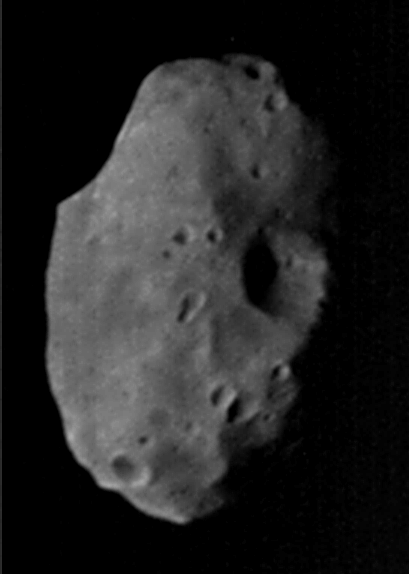
Veverka mentioned that the first cometary surface was Halley, imaged by Giotto in 1986:
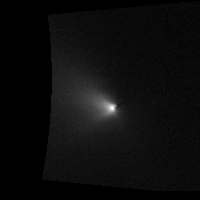
And the first asteroids were Gaspra and Ida, studied by Galileo in 1991 and 1993:
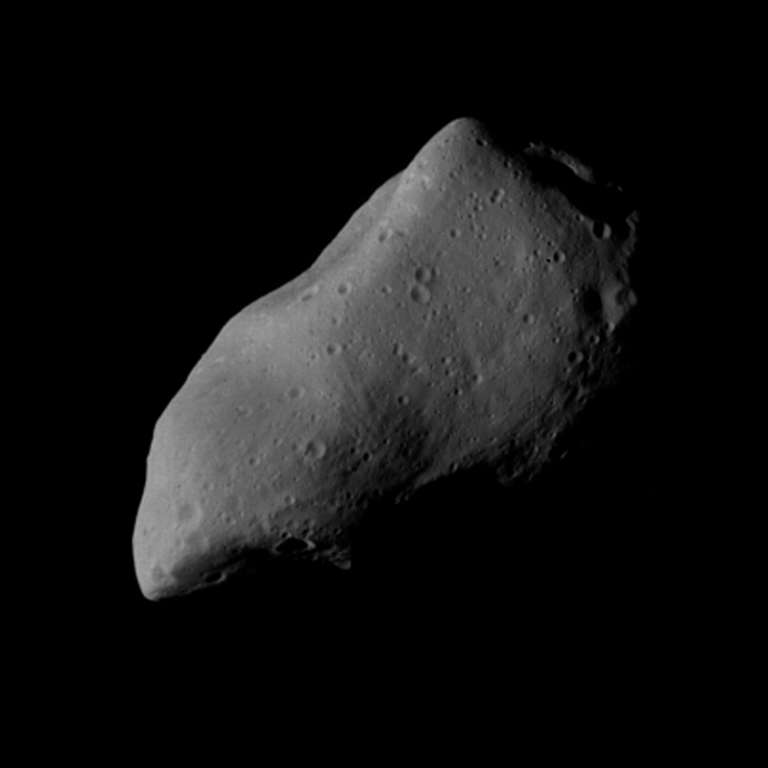
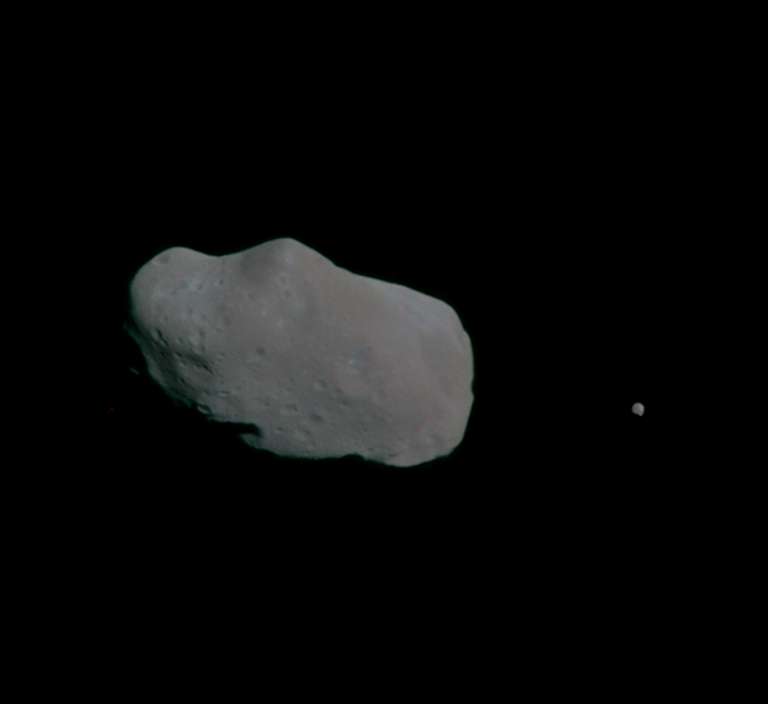
The time before we visited these things was an innocent one, when there was no data, when scientists were free to speculate about what the solar system's small bodies might look like. Forty years ago, there was serious debate as to whether small bodies could hold on to a regolith like the Moon does. Wouldn't any impact ejecta just get blasted away, never to return, thanks to the lack of gravity?
The earliest pictures of Deimos showed that yes, even a tiny body less than 15 kilometers in diameter could retain a smoothing cover of debris. Even more than that, it looks like the debris has slid downhill from Deimos' equatorial ridge. "One of the early prejudices was that, in presence of very low gravity, downslope movement wouldn't be effective," Veverka said. "As it turned out, efficiency of moving stuff downhill is independent of gravity."

Probably the extreme of things-covered-in-debris seen so far in the solar system is Saturn's tiny moon Methone. It's completely covered out to a smooth, equipotential surface by stuff ejected from Enceladus' geysers.

And yet, in Saturn's system there are some things that conspicuously show downslope movement of debris, like Helene:
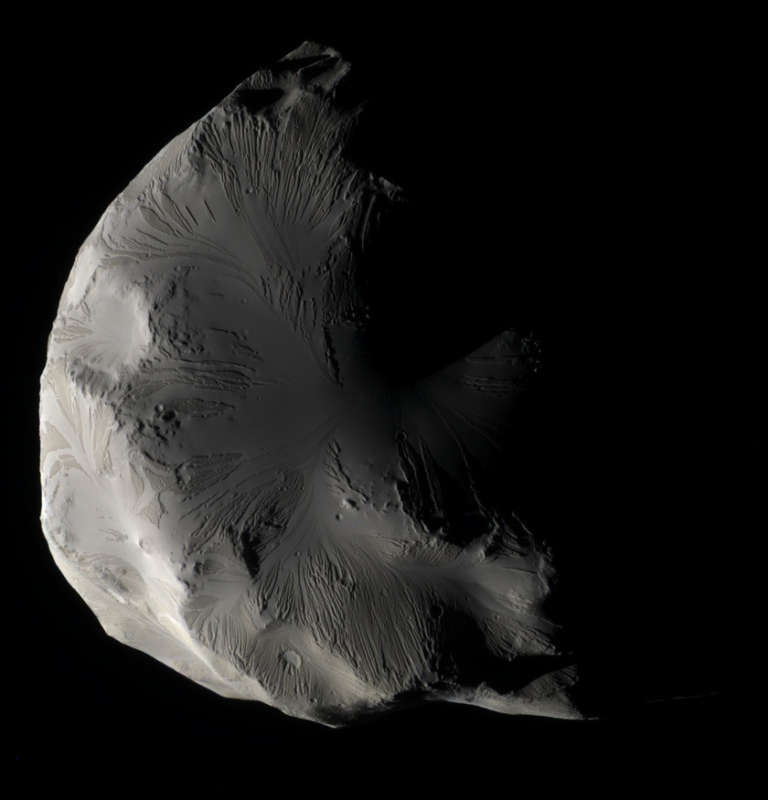
And others that don't, like Janus. Veverka said we still don't know why this contrast exists.

Throughout the solar system, geologists have found "ponds" of particulate material in low-lying elevations on small bodies. These were first studied on the near-Earth asteroid Eros by NEAR; in fact, NEAR landed in such a pond.
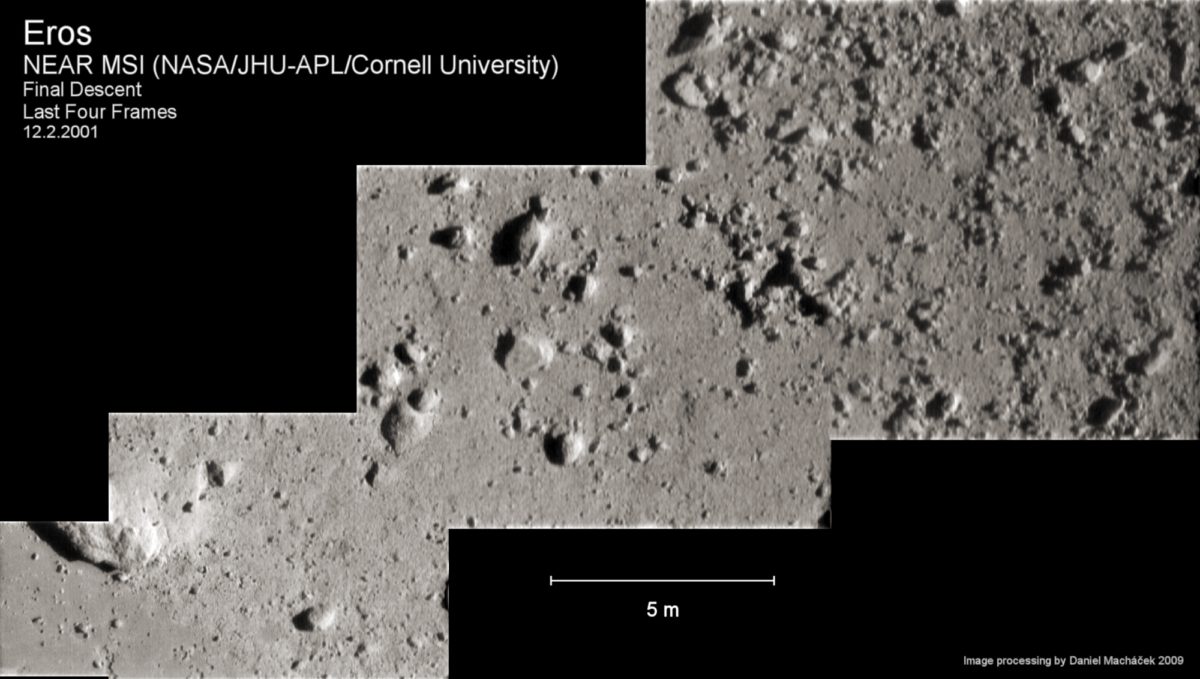
These particles are tiny, less than 100 microns in diameter. "Something has effectively sorted [these tiniest particles] from the regolith. What is that process? We don't entirely know but we have hints." Veverka talked about some work that Pascal Lee did in 1996, which pointed out that the ponds are preferentially located near the equator. Stuff at the equator spends longer on the terminator (day-night boundary) than stuff located at the poles, because of seasons -- equatorial parts of the asteroid just see more sunrises and sunsets than more polar regions that get stuck in winter darkness and summer sunlight for a long time. We know that on the Moon, very fine dust is levitated off the ground by electrostatic charges that concentrate near the day-night boundary; the same likely happens on asteroids, and once the stuff can return to the ground, it'll naturally head downhill.
Next he talked about grooves, which are found on lots of small objects. There have been many explanations for groove, none of them totally satisfying. On Saturn's small moon Epimetheus, as well as on Mars' Phobos, Veverka favored a hypothesis put forth by Sarah Morrison and coauthors (including him) in 2009: that the grooves are oriented in such a way as to indicate that they relate to tidal stresses on the little bodies. Here's a map of Phobos' grooves that looks down onto Phobos' north pole:
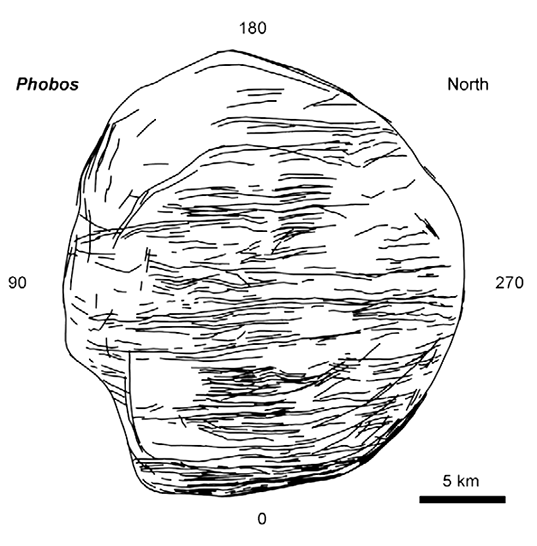
On asteroids, Veverka said, the grooves appear to relate to major impacts; he pointed to work done by Louise Prockter and coworkers mapping Eros' grooves. Many grooves on these small bodies have pits along them, where it seems that some of the regolith has drained into an opening fracture. According to work by Kevin Hortman and Jay Melosh, the spacing between these pits is roughl equivalent to the thickness of the regolith at that spot -- so pit spacing provides a handy way to measure regolith depth.
Veverka moved on to comets, and talked about one of the big mysteries that still has comet geologists scratching their heads. Before we ever saw a comet up close, scientists were curious about what impact craters would look like on them. Despite having visited several comets, we still don't really know, because we're having a very difficult time figuring out which surface features, if any, are impact craters. Look at all the comets we've explored:
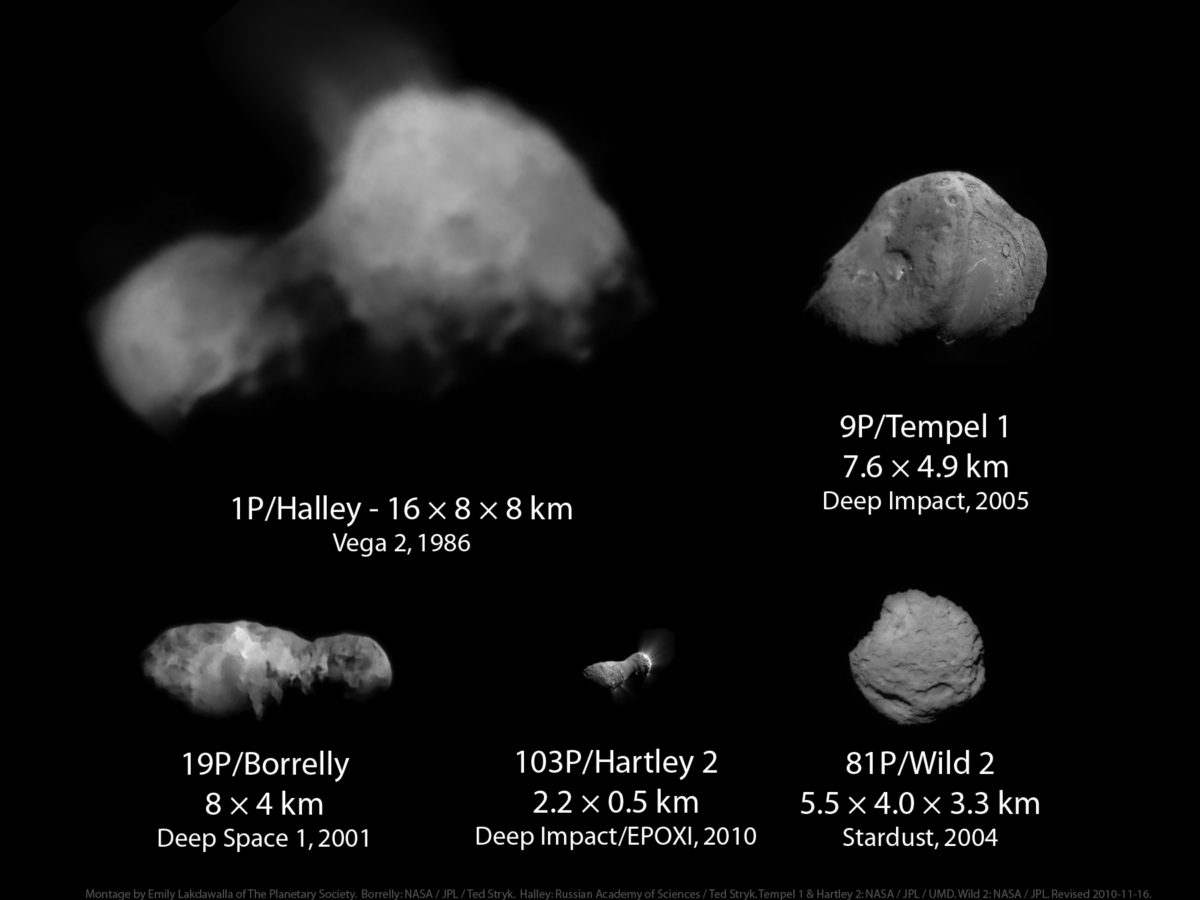
There are pits on many of them, particularly Tempel 1 and Wild 2, but are those pits impact craters? They are both Jupiter family comets with relatively frequent approaches to the Sun, so their surfaces should be short-lived. Not all of the pits on their surfaces can be impact craters.
Insight into what really may be going on on comets comes in part from Cassini's observation of small Saturnian moons. Veverka compared Epimetheus, shown below, to Tempel 1.

He mentioned that the comparison between Tempel 1 and Epimetheus isn't quite fair because Epimetheus is more than ten times larger than Tempel 1, but the two are similarly "under-dense," having densities only about 40% (Tempel 1) and 60% (Epimetheus) of that of water. That suggests they both must be fluffy like snow, both on the surface and inside. How does this material behave when something strikes it or when comet outbursts happen? In his own work, Veverka has remarked on Tempel 1's smooth flows, un-pitted regions of smooth material that seem to occur only in gravitationally low-lying areas. Fluff that gets mobilized by an impact or an outburst runs downhill and ponds in depressions. In the image below, the top half of Tempel 1 contains a tounge of material that seems to have flowed in this way.

It's tempting to think of small bodies as nothing more than passive tracers for the gravitational forces that shape the solar system, but Veverka's talk convincingly demonstrated otherwise. The forces that shape their surfaces -- gravity-driven landslides, levitating-dust ponds, tide- or impact-induced grooves, or impacts themselves -- do not come from active internal geology, but their surfaces are still fascinating. Each body is subject to the same forces, and the same processes shape their surfaces, but each is a unique world, individually interesting to explore. Insights that we gain on one lead to re-examination and new discoveries of another.
What will the next 40 years of small-body exploration bring? I can't predict that, but I (and this is me, not Veverka) am betting we'll be seeing a lot more worlds that are even smaller than the ones I've shown here. Which makes it interesting that I can't find anywhere in my notes that Veverka mentioned Itokawa, the smallest asteroid yet visited by a spacecraft. So I'll close this post with a picture of Itokawa, and wonder what strange and different places we'll explore in the coming decades.
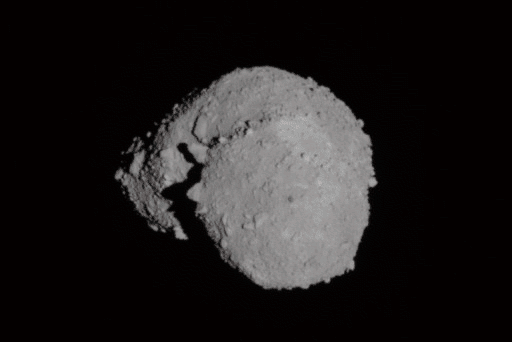
Support our core enterprises
Your support powers our mission to explore worlds, find life, and defend Earth. You make all the difference when you make a gift. Give today!
Donate

 Explore Worlds
Explore Worlds Find Life
Find Life Defend Earth
Defend Earth

